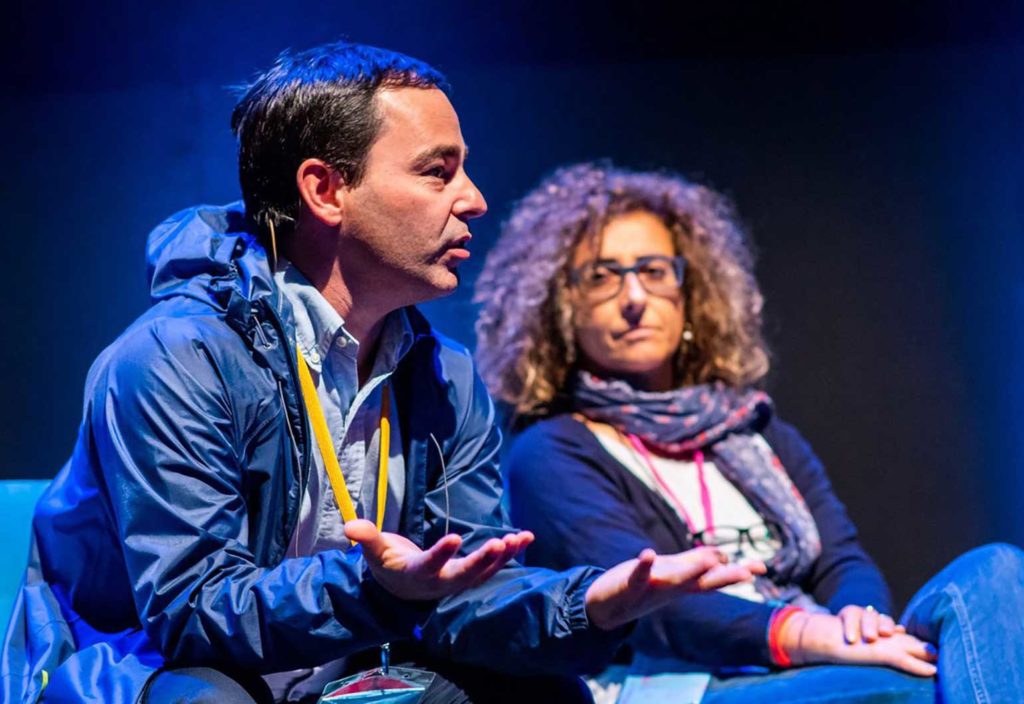Major infrastructure projects often sever connections between people and Country, but they also provide an opportunity to reconnect important stories and histories with the land they belong to.
An abutment becomes a canvas for an Aboriginal artist, while the walls of a new car park tell a meaningful story that bridges the gap between concrete and Country.
“Aboriginal knowledge doesn’t just sit in the past, and it’s not just about heritage sites,” WSP’s Technical Executive of Indigenous Architecture Michael Hromek told create.
“[Avoiding building on cultural sites is] important, but rather than Aboriginal knowledge being something that shouldn’t be disturbed, we should think about how to tap into that knowledge and use it to change the built environment.”
An architect by training and a PhD student at the University of Technology Sydney, Hromek brings his perspective as a designer, and as a Yuin man descended from the Budawang Tribe in the Shoalhaven area of New South Wales, to his work at WSP.
He started at the firm about three years ago in what was then a new role, and said an Indigenous perspective on infrastructure projects was becoming increasingly important to clients.
“All around Australia, it’s starting to become a requirement for projects,” he said.
“There’s a system built in to incentivise engaging with Aboriginal design and knowledge … For me, what’s great about that is local Aboriginal people, communities, stories and design knowledge are the beneficiaries.”
Bringing beauty to the banal
Hromek applies three principles to each project he is involved in: Aboriginal led, community involved and appropriately designed.
This includes WSP’s work on Victoria’s Level Crossing Removal Project, which Hromek will discuss at the World Engineers Symposium this week.
As a design partner on the project, which involves removing 18 level crossings and building 12 new stations along Melbourne’s Frankston line, WSP worked closely with Traditional Owners to consider the Aboriginal knowledge and designs that could be incorporated into the new infrastructure.
“We achieved something a little bit different to the norm,” Hromek said.
“We worked with both Traditional Owners and the design teams to think about things like an abutment or a park as canvas opportunities to communicate themes and stories.
“Then we made sure it looked contemporary and interesting, drawing in new design innovations, and wasn’t just tokenistic.”
Engineers make the perfect partners on these projects because they can see the practical advantages of incorporating Aboriginal design, Hromek said, and they have the power to do it.
“It fits quite beautifully within an engineering context, primarily because a lot of the time engineers have control over budget, and they have control over design in many ways,” he said.
“It’s amazing how many engineers I work whose eyes light up when I Photoshop some local art on their 3D model of a bridge … And then we’ll actually go and build it.
“It brings meaning to your work when you see how much life can be brought to a banal structure; something that was going to be blank and is now a canvas talking to Country.”
While many firms have Reconciliation Action Plans or other forms of reconciliation, Hromek said his work at WSP was particularly fulfilling.
“We’re building bridges and actually getting Aboriginal people involved,” he said.
“That’s kicking goals, that’s breaking down barriers.
“Because I’m a designer and an architect I also want to make sure it looks good, and that it’s designed in the right way.
“It should be contemporary and new and should talk about the living culture that is Aboriginal Australia.”
Don’t miss Michael Hromek present at the World Engineers Symposium this week.
